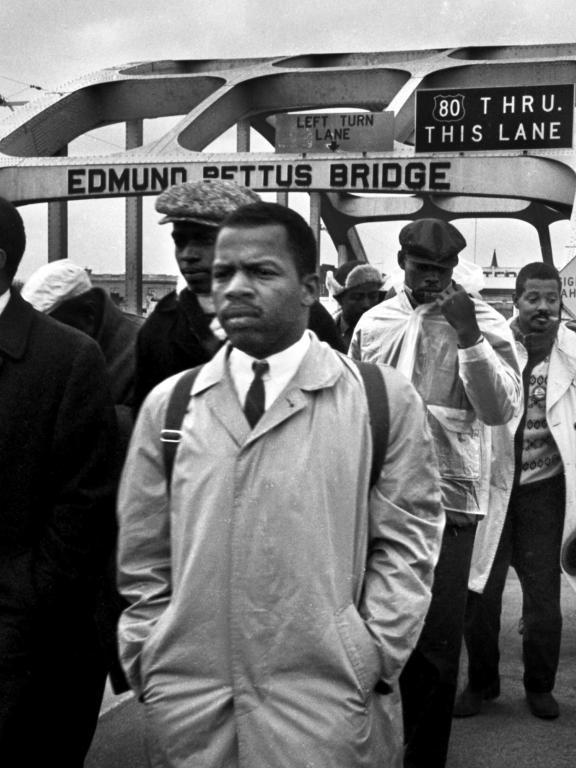Anyone who has been around Christian youth ministry for any length of time has seen the cringe-inducing flopsweat of adults desperately trying to seem “cool” around young people. The same sorry spectacle can be seen in a lot of campus ministries that try to appear cool to college students. And in a lot of “seeker-friendly” churches that seem over-eager to appear cool
The problem is not that they’re trying the wrong things to seem cool, but that they’re trying at all.
Forrest Wickman offers a long exploration of the ineffable trait of coolness, as reflected in the seismic shift from one-strapping to two-strapping of backpacks. Wickman’s conclusion cuts to the core of the matter: “If you’re no longer effortless, you’re no longer cool.”

When it comes to cool, do or do not. There is no try.
“I don’t remember it being a conscious decision,” said Tom Ferguson. “This is way more than I’ve ever thought about this topic.”
Ferguson, now a school teacher, was a “consummately cool” high school student that Wickman describes as “the two-strapping Patient Zero” who “hadn’t changed his habits because of back pain or because of what some movie told him to do. He did it because he was truly cool, because he didn’t care.”
Wickman sees the paradox of his essay (also the paradox of this post, here, about his essay). Any exploration of the nature of coolness must, by definition, concern itself with the question of whether or not a given behavior is cool. The presence of that question, however, is the antithesis of cool. To ask that question, Wickman has to care — to think about these things far more than someone like Tom Ferguson ever consciously thought about them.
Wickman thus recognizes that his reflection on the subject requires him to be uncool. He deems the subject worthy of consideration anyway, choosing not to let the intrinsic uncoolness of it deter him. If asking these questions necessarily makes him uncool, he’s cool with that.
The line here is a fine one. That decision — to be unconcerned with the consequence of being perceived as uncool — is, in itself, a form of being cool. But only to the extent that it’s an unselfconscious decision. To embrace uncoolness as a deliberate act of appearing cool to the standards of coolness in the hope of thereby seeming cool — well, that would be doubly uncool. That’s too much effort.
“If you’re no longer effortless, you’re no longer cool.”
What we’re circling around here is the ethical dimension of coolness. That’s the reason this actually matters as something other than shallow fashion statements and bids for popularity. What Wickman is describing here as the true coolness of not caring, as “effortlessness,” really has to do with integrity. “Cool” is, among other things, the name we give to those whose actions align with their own core beliefs and identities, without regard for the opinions of others.
That’s why Wickman’s piece seems to go back and forth on whether cool people are trend-setters or trend-breakers. They’re neither. They’re both. They’re going to do what they’re going to do without any regard for the trend.
Wickman’s emphasis on effortlessness suggests a zen-like quality of cool — something only attainable through an unconscious, un-self-conscious, lack of deliberation. But integrity — and therefore, cool — can also be self-conscious and deliberate. It can be a choice, an assertion.
“Bow ties are cool,” Doctor Who announces, adjusting his defiantly uncool neckwear. If he really thought that, he would be doubly mistaken, because: 1) Bowties are not actually regarded as cool; and 2) Wearing something that you believe is regarded as cool in the hope that doing so will thereby make you cool is also not regarded as cool.
But what the Doctor is really saying is that he likes bow ties. He thinks they’re cool and he doesn’t care if nobody else agrees with him. That’s deliberate and self-conscious, but it’s still cool because it expresses his integrity.
This is why some people with blue hair are cool, but only some. Blue hair, after all, is never effortless. You’ve got to go out and buy the bleach and the dye, and then you’ve got to spend a couple of hours carefully putting in the effort of changing the color of your hair. If all that effort is part of a bid to make others think you’re cool — if it’s motivated mainly by concern for the opinion of others — then the end result won’t be terribly cool. You’ll wind up looking like an uncool person in a cool-person costume. That’s what people mean when they say, “That leather jacket is wearing you.”
Whether it’s the defiant integrity of the Doctor or the zen-like integrity Wickman attributes to Tom Ferguson, it can’t mean anything unless you’ve got a core self to which you can be true. It’s not about bow ties or backpacks or blue hair. It’s about knowing who you are and what you stand for, and not being willing to toss that away in a bid to change the way other people might think of you.
And that, in turn, requires becoming someone you can be proud of being, regardless of what anyone else thinks or says.
The photograph above shows a young John Lewis on Bloody Sunday, March 7, 1965, leading marchers across the Edmund Pettus Bridge into Montgomery, Alabama. Lewis is two-strapping his backpack and he is, in this photo, the essence and definition of cool. But that coolness doesn’t come from what he’s wearing or from how he’s wearing it. It comes from what he’s doing and from who he is becoming by doing it.
So if you’re a youth minister, or campus minister, or would-be hipster pastor of a seeker-friendly church, there’s the lesson. Don’t worry about what anyone else thinks about what it’s cool to wear or to like or to listen to. Do and become. Others may then come to see you as cool. Or not. But if you become someone you can be proud of becoming, you won’t much care either way.












